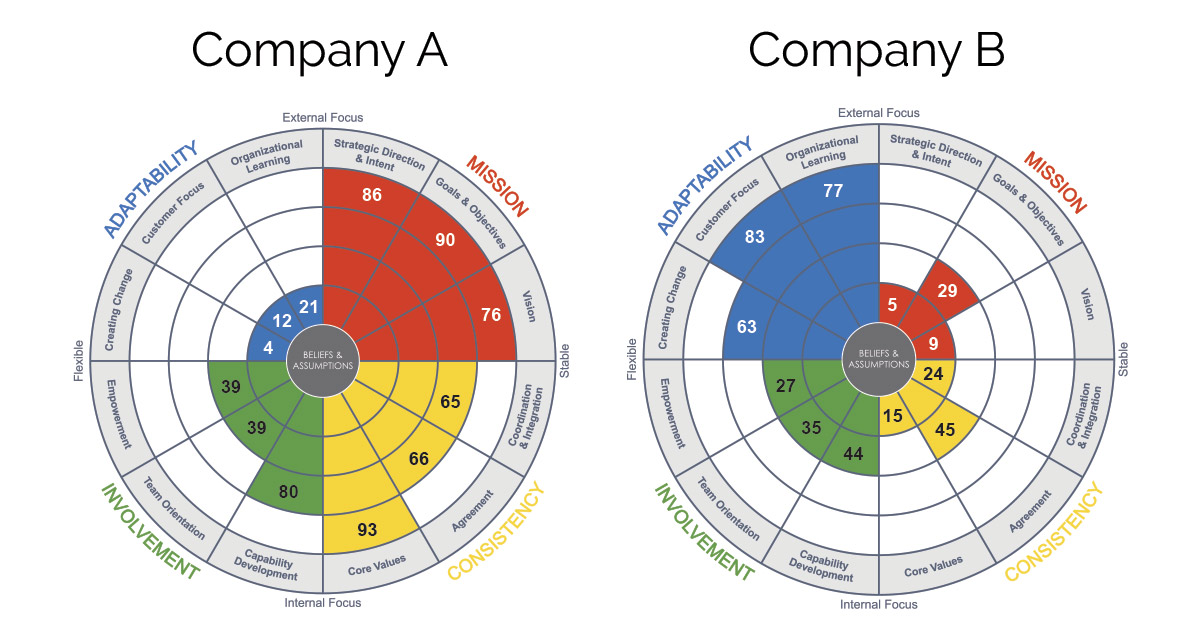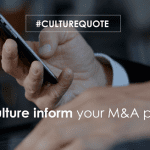Keeping Your Promises to the Marketplace
The Impact of Culture on Mergers and Acquisitions
In recent years the annual value of merger and acquisition deals across the globe is in excess of three trillion dollars. Disruptors are moving into new industries and the traditional drivers of M&A activity remain a critical component of growth strategies – the acquisition of new technologies, talent, intellectual property and the expansion into new geographies. But the up-side of these deals is balanced by significant risks of under performance caused by a lack of strategic clarity, loss of key talent, underestimation of the time and resources needed to integrate, and what many have indicated as a leading cause of acquisition under-performance – culture clashes.
Today leaders of organizations involved in mergers and acquisitions are aware that they need expertise to manage the culture integration process. They recognize that to move more quickly and fully realize the desired synergies a merger or acquisition can offer, culture due diligence and integration cannot be an after-thought. Given the stakes, simply ‘rolling the dice’ and hoping for the best is not an acceptable strategy for culture integration. Estimates suggest that 70% – 80% of deals fall short of the anticipated outcomes. Culture clashes are at the top of every list for why a merger or acquisition failed to achieve those outcomes. Failure to get it right means that the promises made to the marketplace come crumbling down into a heap of unmet expectations.
Through its practice, Denison Consulting has demonstrated that culture awareness, understanding and management can be done with the same discipline that is commonly applied to financial, technological and operational change management with significant results.
Shaping Your Culture Integration Strategy
There are key components to shaping an effective culture integration strategy including:
Focus on the Value Added: The Board and Senior Executives must be able to articulate the value proposition expected from a merger or acquisition. How does it fit with the growth strategy and what will be the benefit to clients and to members of both organizations?
“Know Thyself”: Leadership must understand how the cultures of the two organizations will come together. In the case of an acquisition, to effectively integrate another entity into the culture of the acquiring firm, that firm must be clear on its own culture. There is often an inherent assumption that the acquirer understands its culture but that may not in fact be the case. Understanding your own culture, including the vision and strategy for the future and the values and norms that drive behavior – is critical when preparing for the integration of other organizations or for effective dialog in bringing two strong organizations together.
Target Identification and Due Diligence: Applying culture awareness to the due diligence process can be a strong predictor of success. There is a wide range of data about organizations that is available in the public domain today to help learn what really makes them tick and how they actually get things done. Analyzing social media and company websites can help in the identification of possible target matches.
Transition Planning and Team Alignment: Knowledge is power. Imagine standing at the edge of a minefield and needing to get to the other side. Now imagine someone handing you a map that shows where the mines are located. Knowing the cultural landscape of the respective organizations allows the transition and integration teams to proceed with confidence that they are focusing on issues relevant to business performance and an understanding of where the cultural landmines are located. The Denison culture assessment provides such a map.
The culture profiles generated above through the Denison Organizational Culture Survey provide a clear picture of where potential gaps exist and where best practices are evident in the two organizations. This data collection allows for input from employees in the respective organizations and involves them in the culture integration process. Leaders can target the integration effort on aspects of culture that have been shown to impact business performance. Everyone can quickly and easily become aware of the potential areas of clash and turn that awareness into specific plans for closing the gaps.
Day 1 Integration: The deal has been signed and the real work of bringing the organizations together begins. The cultural insights reflected in the framework of the Denison Model provide a roadmap for the culture integration process. What is the common Vision for the future? What Values will guide behavior? How do we balance internal integration with the external needs of the marketplace? The roadmap keeps you focused on the activities that create unity, foster alignment and impact business performance.
Ongoing Culture Development: Integration of one or more organizations is important. However, culture is a living, dynamic asset (or liability) that needs constant attention and management. There may be more acquisitions to make. The competitive landscape will change. Leaders and technologies will come and go. Being intentional about culture and culture management is a sophisticated competence that offers a sustainable competitive advantage.
Taking Action
Leaders who are tasked to effectively manage a merger or acquisition know that they must develop a discipline that reduces the risk of culture clashes that can significantly undermine the value creation of their merger or acquisition strategy. Adopting the processes and tools described above will increase the level of insight, collaboration and control needed to effectively manage the culture integration process and the likelihood of realizing the potential synergies that the deal offers.
If you would like support in this process, please be in contact with us. We can help you achieve transformation right to the bottom line.







